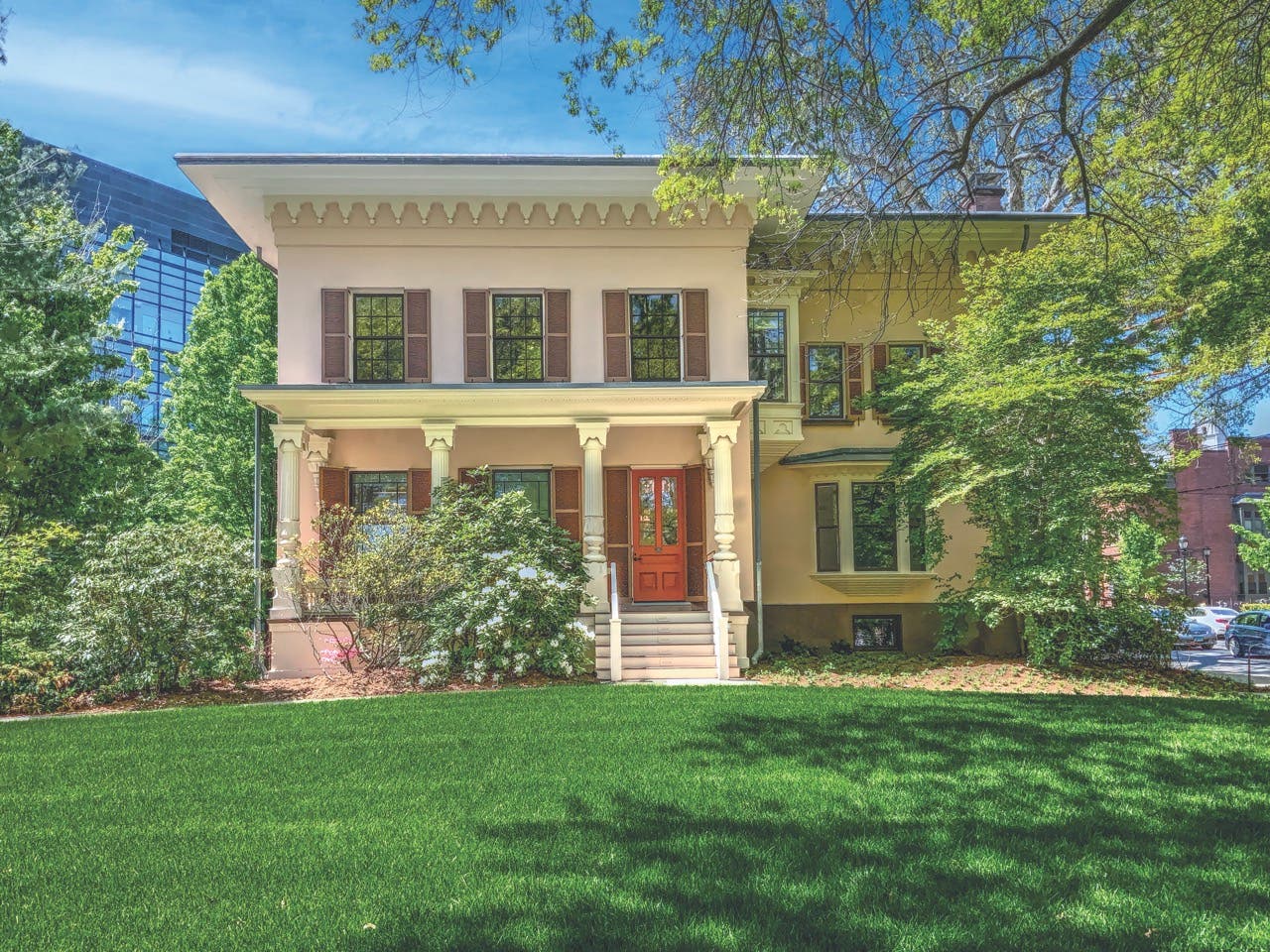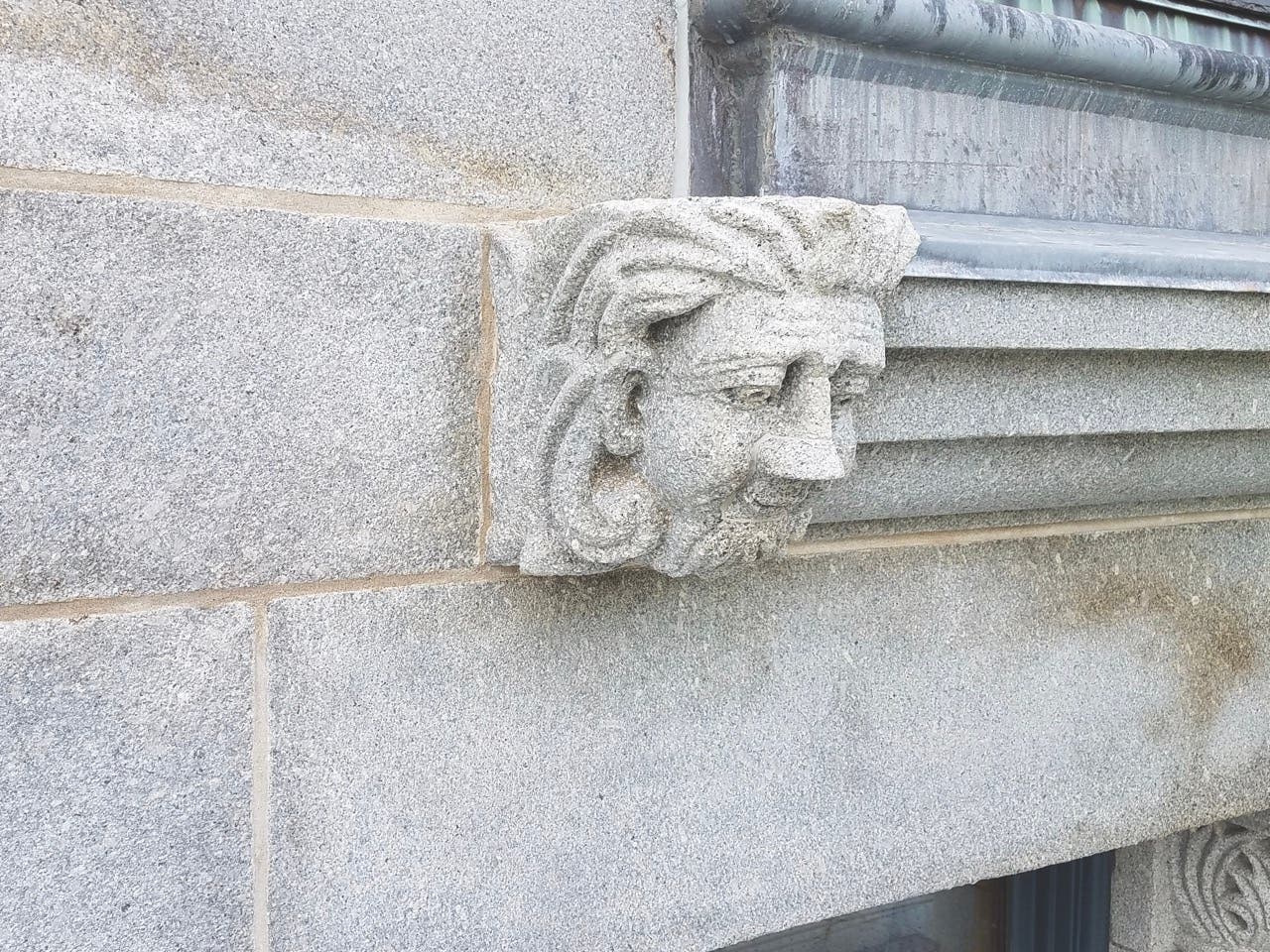
Product Reports
Stone Age
Types of rock
There are three types of rock: sedimentary, igneous, and metamorphic. Sedimentary rocks are those which are formed near the surface of the earth by the waterborne deposition of sands and silts that cement together over time, such as sandstone or limestone. Igneous rock forms when magma cools relatively slowly underground, such as diorite and pumice. Metamorphic rocks are those which began as some other type of rock, and by heat and pressure, become metamorphic rock (shale becomes slate, limestone becomes marble).
Granite belongs to the category of igneous rock. It typically consists of the minerals quartz, feldspar, and mica, which are visible as crystals to the naked eye. Granite is very hard, very strong, relatively impermeable, and therefore durable. Being the most abundant rock in the earth’s crust, combined with its variety of colors and textures,
it has historically been a popular building material.
Hardness is measured on the Mohs Scale of Mineral Hardness, where 1 is the softest (talc) and 10 is the hardest (diamond). For reference, a human
fingernail is ranked 3 and a steel knife
is a 7 on the hardness scale, with granite falling in a range of 6 to 8. While
compressive strength varies by type, granite ranges between 14,000 and 45,000 PSI, in comparison with
steel at 25,000 to 50,000 PSI.
Granite performs well in freeze-thaw cycles since it is relatively impervious to water absorption. Granite doesn’t expand and contract significantly with temperature (as compared to brick or steel).
How granite fails
There are many failure mechanisms that can damage granite which are not intrinsic to the material. The initial tooling and setting of the stone can cause early problems. When the face of the stone is tooled (or dressed) to provide the final appearance, the pressure of the machinery providing the final surface can sometimes bruise he surface of the stone. This bruising can cause the outermost layer to delaminate from the rest of the stone, resulting in blisters and peeling.
Freeze-thaw, while not as great a threat for granites as for sedimentary stones, can affect stones in extremely exposed locations where there is poor water management. When moisture enters the pores in the rock and temperatures drop to freezing, the water expands as it turns to ice, forcing the pores apart, breaking down the stone surface. If salt is dissolved within the water, it will further aggravate the situation. As the moisture dries out, the salt precipitates out of the water, and recrystallizes in the pores; these crystals exert further pressure on the pores. When the stone surface is already bruised, and it is exposed to saturating moisture, the surface of the stone will blister and flake off. This is a situation for which a repair is not possible, other than to redress the stone by removing the top few millimeters of peeling stone.
While granite doesn’t typically have the bedding planes found in sedimentary rock, some constituent platy minerals will align in the cooling process, forming foliations. Stone should always be placed in the wall with the bedding plane horizontal, which makes best use of its compressive strength and minimizes the exposure of the edges of the foliation to weathering. When bedding planes are not horizontal, the exposed edges can take on water, leading to fracturing of the planes through freeze-thaw action.
Stone is set into the wall using mortar. The mortar must be softer than the substrate (stone) to act sacrificially, as in, break before the stone, because mortar can be repaired repeatedly. If the building moves and the mortar is too strong, the stone could break instead of the mortar. (For further information on point, see Traditional Building article traditionalbuilding.com/product-report/mortar-glue-that-binds.)
If there is sufficient differential movement in the building, the stone may crack or spall. The stone could also break with impact damage, such as from a swing stage or a truck.
Lastly, stone can be etched by acid rain or strong acid cleaning. Previous cleaning campaigns with a strong
abrasive method such as sandblasting
is frequently the cause of loss of
detail in carvings and the sharpness
of a stone arris.
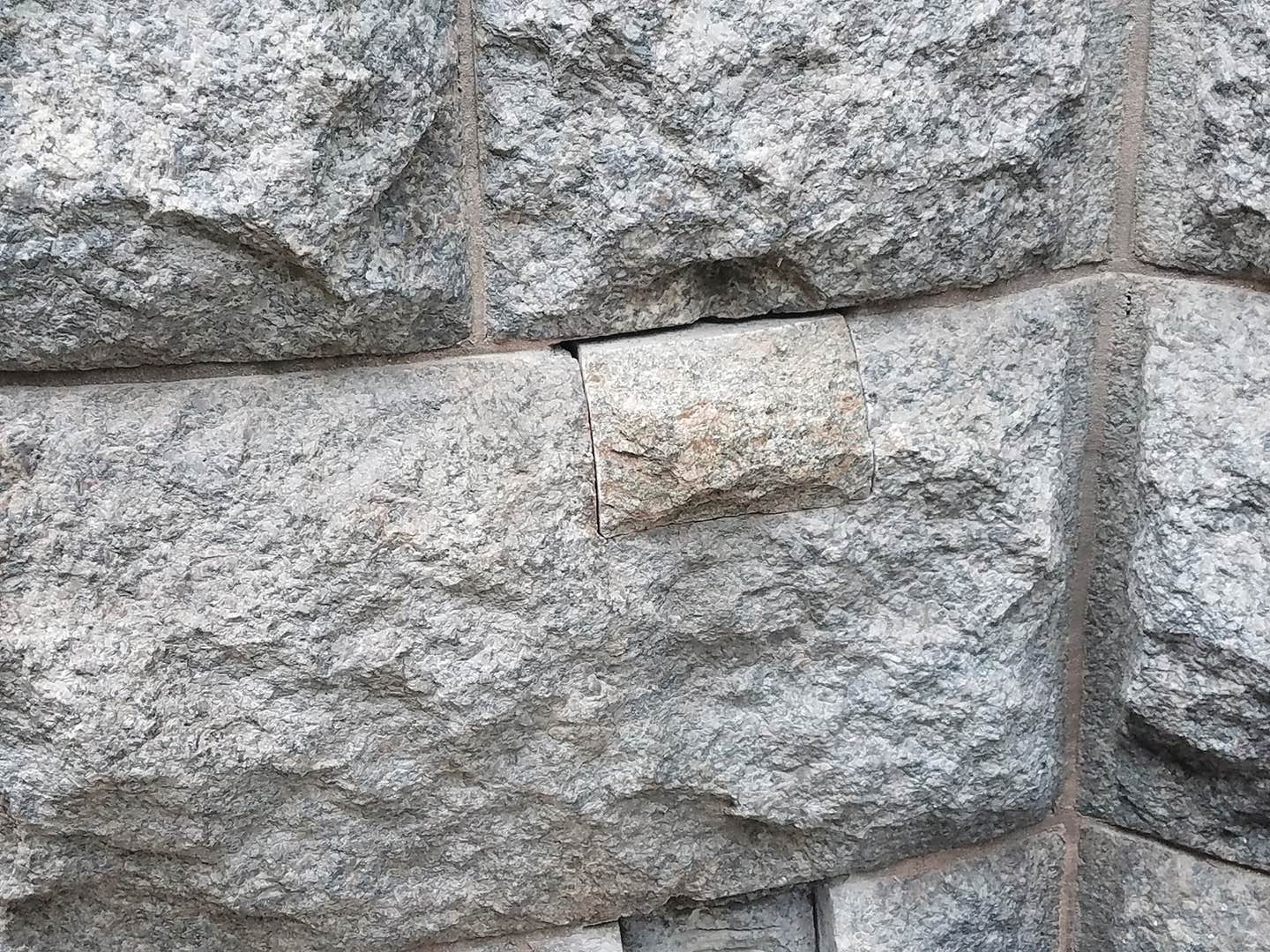
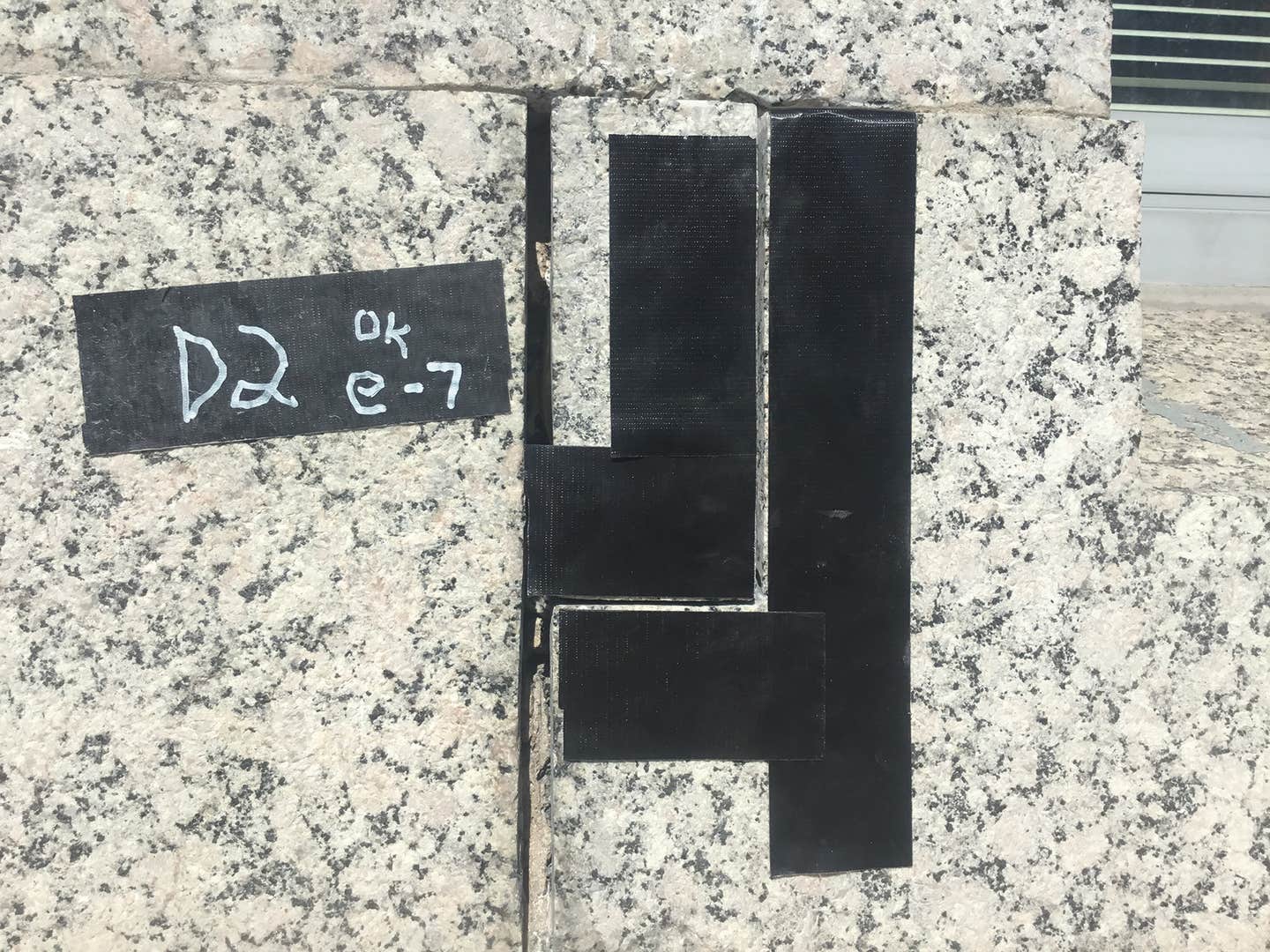
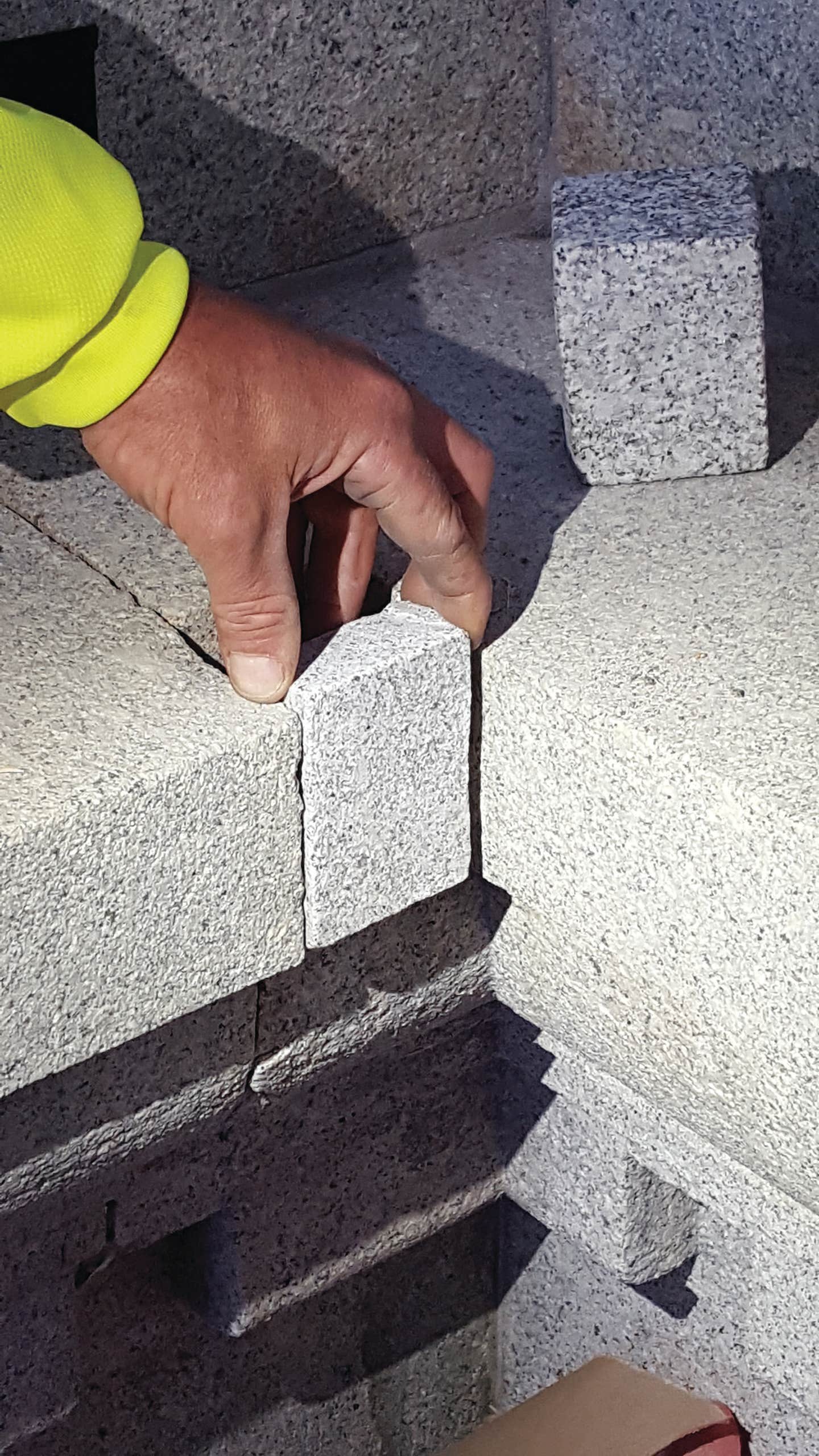
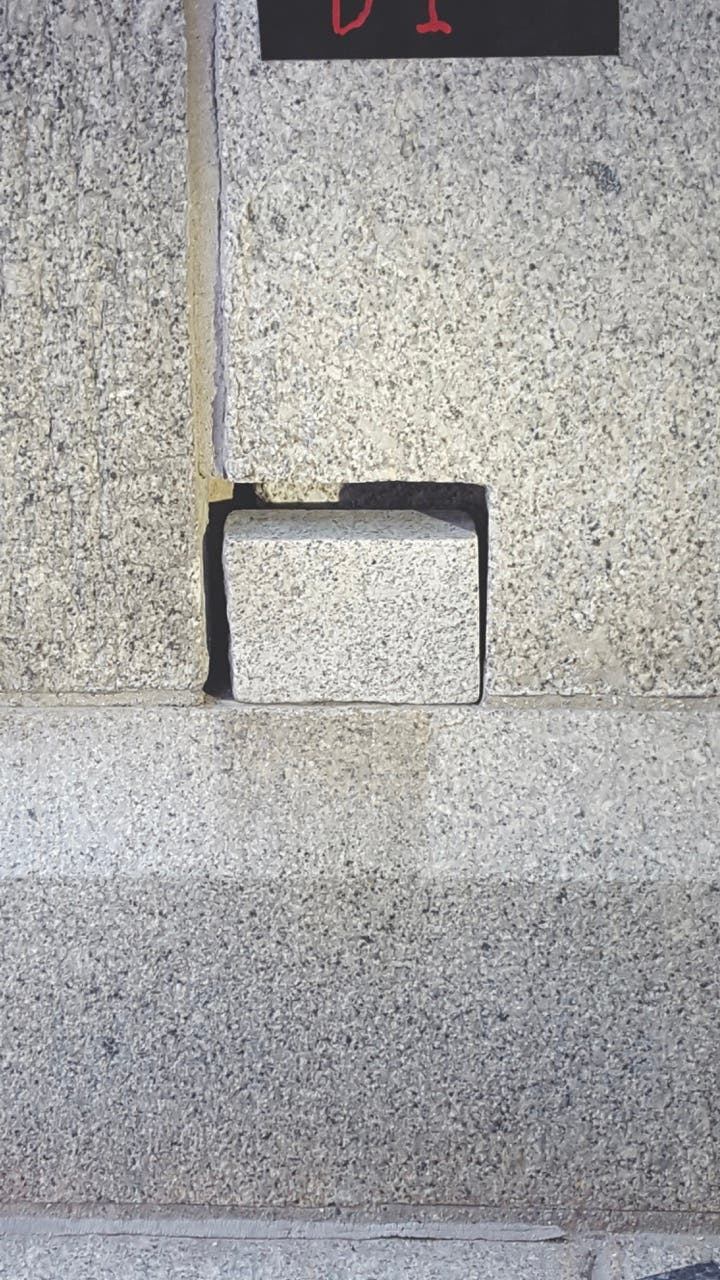
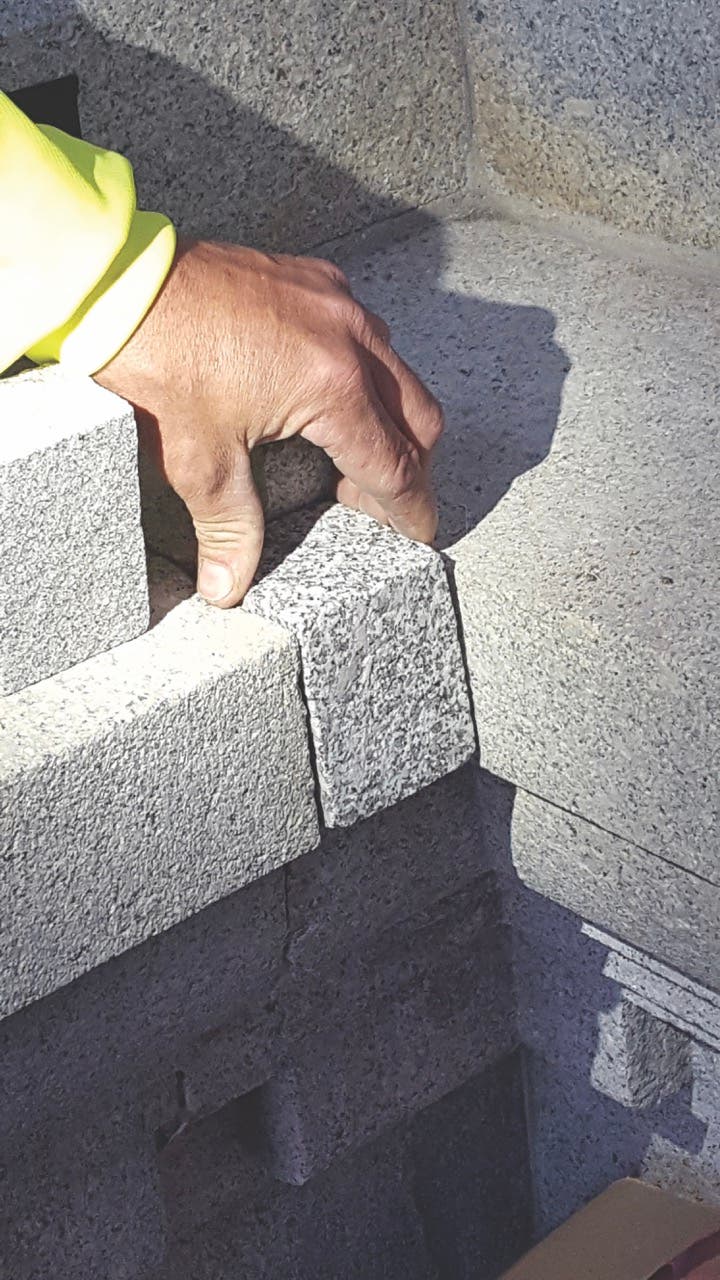
Repairs
Where differential movements result in a crack through the stone, epoxy repair can be used. Where the crack has not fully split the stone, tiny injection ports can be drilled along the crack, into which the epoxy is placed with a syringe. It is important to use non-staining epoxy, and to mask the face of the stone to prevent the epoxy from being visible.
If a crack has separated the stone into two pieces, it can be removed from the wall for repair. The two pieces can be drilled with matching holes to accommodate stainless steel tie pins that cross the crack to hold the two pieces together mechanically. Combined with the chemical bond of epoxy securing the pins and sealing the face of the crack, the repair will be stronger and more permanent.
Where a piece of stone has been broken off or has eroded away, new material may be cut in with a dutchman repair. The damaged portion must be cut out with straight, smooth sides, and a new piece of stone cut to fit snugly into the hole, to minimize the visual impact of the seam. While the least amount of historic stone should be removed, it may be necessary to extend a cut to the edge of a stone. It is important not to leave small slivers of stone adjacent to the repair where they could break off, causing more damage. Once the stone is satisfactorily dry fit, epoxy is applied to the surfaces of the void and the repair piece, stone is placed to let the epoxy set. When the dutchman is in a location where only the chemical bond of the epoxy secures it against gravity, stainless steel pins should be drilled into both pieces of stone, to provide a mechanical bond for life safety.
The most important aspect of a dutchman repair is matching a stone to the substrate in appearance, such as color, grain, unusual features such as veining, and the texture of the face. This may require sourcing several colors or shades, since characteristics may vary from piece to piece. Even with the best craftsmanship on cutting and sculpting the stone, a patch will be glaring in its visibility if the stone doesn’t exactly match. The new stone must also match physical characteristics, such as strength, hardness, porosity, and freeze-thaw capabilities.
If there are larger stones that are too damaged to reuse whole, they can be salvaged for use as dutchman repairs. Where exactly matching stone is not found, sometimes a full, sound stone in an inconspicuous location on the building can be removed for repairs, and replaced with new imperfectly matching stone where it won’t be noticed. This effort provides material for excellent matches of new stone dutchman.
While it is possible to repair granite with patching material, the patching material itself will not provide the durability of granite, and the relative imperviousness of granite does not lend itself to a strong bond with patching materials.
At the completion of a repair project, the client will frequently want cleaning to provide an overall completed appearance. A plan to clean should be prefaced by many cleaning mock-ups and testing. Just because granite is non-porous doesn’t mean chemicals won’t damage it. Further, cleaning should only be performed after all repointing work is completed. Chemicals that enter open joints can dwell internally and damage the stone substrate. If using a detergent, use only a non-ionic type since a granite’s reaction to ionic detergents is efflorescence. Abrasively cleaning granite can soften crisp arisses or the granite detail. Further, abrasives can cause the constituent quartz in granite to break down, releasing silica as airborne dust, which is known for causing silicosis of the lung.
Typically, acidic cleaning will be the most successful approach. The solution should be applied with a non-metal brush and agitated midway through the dwell time of the chemical, using the mildest solution that is effective. Any areas of polished granite, of metals, or of glass should be protected from accidental exposure to the acid, which can etch. All runoff from the cleaning operation must be retained and collected for disposal at an appropriate environmental disposal facility.

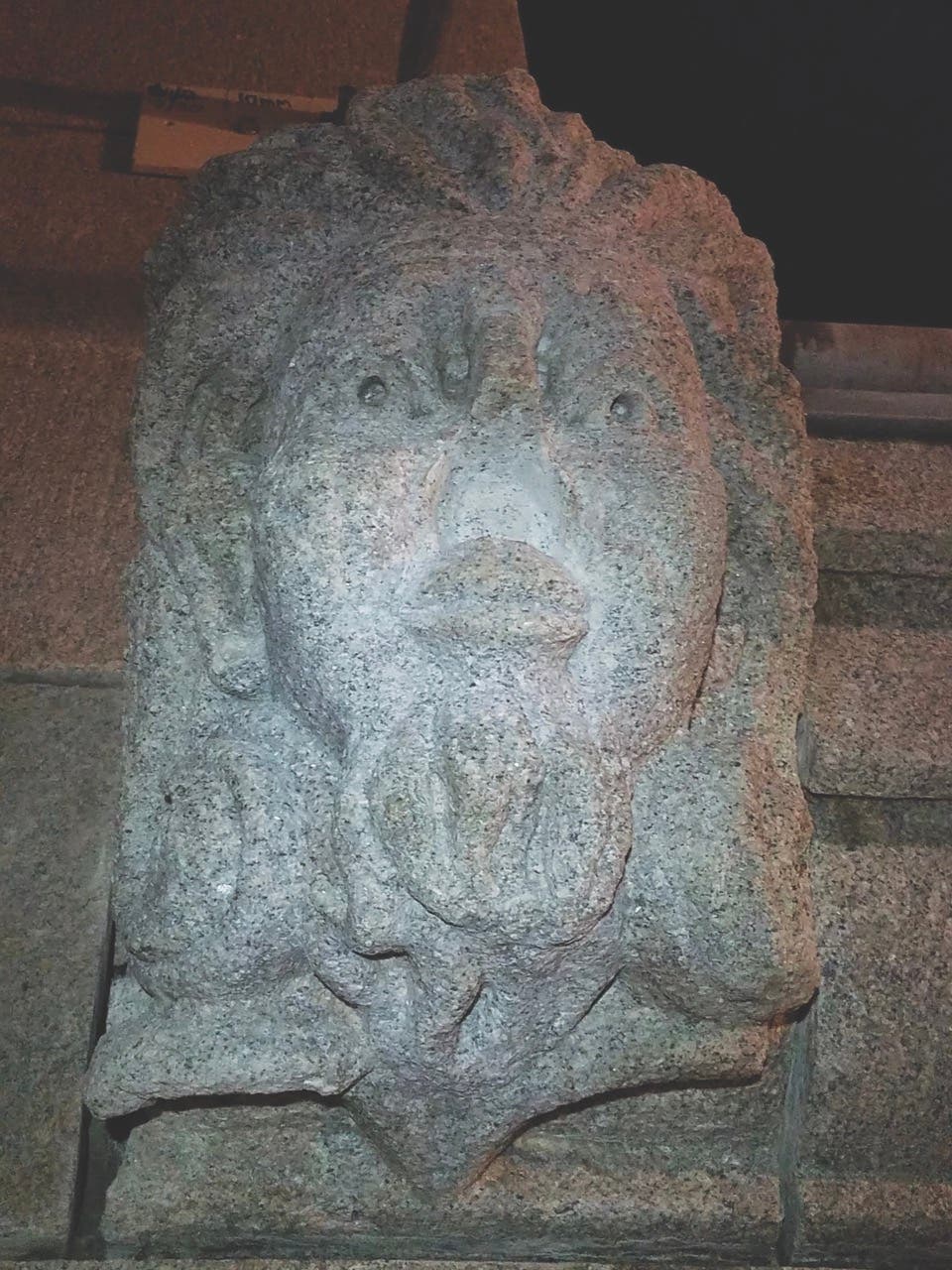
Granite repairs, while generalized in this article, require individual assessment of the causes of the damage, mitigation of those causes, and development of the treatment of the symptoms, all during the design phase. Adequate time is required to perform pre-construction testing and mock-ups, along with sourcing the stone, so that the design documents will provide accurate and full-fledged information to contractors. A clear scope of work with known successful solutions will provide credible and consistent bidding results and avoid delays during construction. TB
Susan D. Turner is a Canadian architect specializing in historic preservation of national registered buildings. She is the Senior Technical Architect for JLK, a woman-owned business specializing in the repair and preservation of historic buildings. She can be reached at sturner@jlkarch.com



